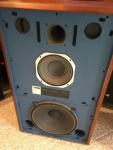There is nothing inherently "wrong" with the popular garden hose sized cables; it's just that they are not a requisite from a performance standpoint. If you already have them, then certainly use them. My problem is that they are often difficult to employ in real world setups (like when space is a premium and I need a nice flexible shielded cable)
They are for the most part eye candy and help sell a lot of expensive wire; I know, I've got more Cardas stuff than I'm willing to let on!

It's too thick (as in not needed thick), doesn't make bends and turns well but most importantly, puts an awful lot of mechanical stress on jacks and plugs, especially vintage RCAs (unless you spend the time fooling around to support their weight) And in many instances, the termination is so large they don't fit well on older gear with more closely spaced jacks
I made the switch to the Mogami bulk catalog, a soldering iron and nice Neutrik and REAN connectors and have never looked back; they make a good quality, realistically priced, "pro" wire for just about any application you could ever want for
If I had known then what I know now, I could have wired my entire system with the same stuff a lot of good studios use for what I paid for a single pair of super duper "Golden Ratio" interconnects
(got a nice big box of "gently" used Cardas stuff is anyone is interested!

)
This is not a knock on Cardas; just stating the fact that it's not a very practical cable for real world use (and it definitely doesn't do anything the Mogami or high quality Belden wire can't do. Belden and Mogami also publish their capacitance specs so you can choose appropriately for your projects, especially useful when making up wires for PHONO and low level signal use.




 Reply With Quote
Reply With Quote






 )
)
